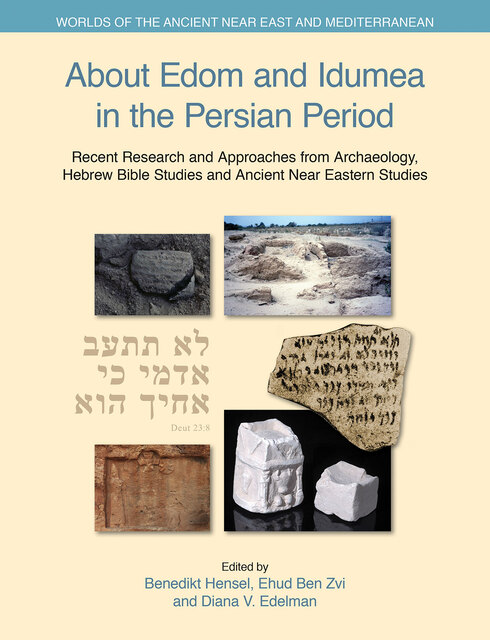Hensel/About Edom, 6. Dry Climate During the Early Persian Period

Full description
In the fourth and third centuries BCE, the province of Idumea included all the areas of the Beersheba-Arad Valley, the southern Shephelah and the southern Judean hill country; the majority population in the region was Idumean and Arab. The borders of Yehud had contracted and most of the Judahite population was concentrated around Jerusalem. Explanations for these historical, geopolitical, cultural, and demographic changes have been well-discussed by scholars. In “Dry Climate During the Early Persian Period and Its Impact on the Establishment of Idumea,” Daphna Langgut and Oded Lipschits provide a set of paleo-environmental data that sheds new light on this process. Palynological and sedimentological information show that during the late sixth through the mid-fifth centuries BCE (~ 520–450 BCE), dryer climate conditions were prevalent in the region. During the early Hellenistic period, wet climate conditions and intense olive horticulture characterized the region. Since in the steppe-marginal areas of the southern Levant even minor climatic variation can result in major environmental change, the main argument advanced by Langgut and Lipschits is that the dry conditions of the early Persian period caused a process of abandonment of most villages in the southern parts of the former kingdom of Judah, triggering nomadization by some elements of the local population and immigration to the core areas of the province of Yehud by others. After the destruction of the kingdom of Judah and the collapse of the southern settlement and military system, this process provoked a demographic vacuum in the southern lowlands (the Shephelah), the southern hill country and the Beersheba-Arad Valley that attracted the immigration of nomadic population. The gradual increase in moisture in the late-fifth and fourth centuries BCE probably reinforced a cultural progression by stabilizing the settlements that were highly dependent on water resources and local agriculture. The semi-nomadic elements could have easily settled in the area and quickly created the settlement alignment of the province of Idumea.
- typeImage
- created on
- file formatjpeg
- file size301 KB
- container titleAbout Edom and Idumea in the Persian Period: Recent Research and Approaches from Archaeology, Hebrew Bible Studies and Ancient Near Eastern Studies
- creatorDafna Langgut; Oded Lipschits
- isbn9781800501348 (eBook)
- publisherEquinox Publishing Ltd.
- publisher placeSheffield, United Kingdom
- rights holderEquinox Publishing Ltd.
- series titleWorlds of the Ancient Near East and Mediterranean
- doi
We use cookies to analyze our traffic. Please decide if you are willing to accept cookies from our website. You can change this setting anytime in Privacy Settings.
